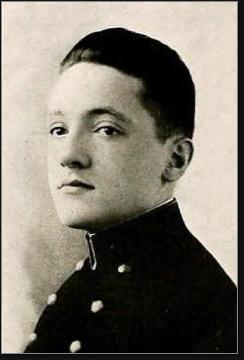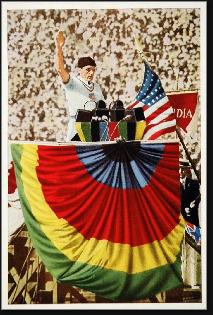
Sport: Fencing
Born: January 18, 1900
Died: April 4, 1933
Town: Lakehurst, New Jersey
George Charles Calnan was born January 18, 1900 in Boston. His connection to New Jersey, sadly, has more to do with his death than his birth.
George’s father was a teamster. George was an excellent student who excelled at English High School, one of the city’s finest public schools, and was appointed to the US Naval Academy during World War I at the age of 16. Tall, skinny, competitive and coordinated, George wanted to play football but the coach at Annapolis wouldn’t give the 130-pounder a uniform. Instead, he fell under the tutelage of George Heintz, Navy’s fencing coach.
George excelled in the sport and became team captain as a senior. He was also named an alternate on the US team at the 1920 Olympics. Inspired by Italian medalists Nedo and Aldo Nedi, George returned to America and slowly mastered his craft in amateur tournaments while in grad school at MIT.
Between 1923 and 1933, George won nine Amateur Fencers League of America (AFLA) titles—four in foil, two in epée, one in three-weapon, and one in outdoor epée. He competed for the New York Fencers Club, and was a member of 13 national championship teams. American fencing had been technique-oriented when George first became involved. Under his leadership, it became a dynamic and competitive sport. Suddenly Americans were being taken seriously on the world stage.

In 1928, George won a bronze medal in the Olympics. In 1932, he won two more bronze medals as captain of the foil and epée teams, and was given the honor of leading the athletes in the recitation of the Olympic oath (left). After returning from Los Angeles, he was nominated for the presidency of the AFLA.
By this time, George was living in Lakehurst. He was stationed at the Naval Airbase and part of the crew of the airship Akron, the largest in the world at 785 feet. On April 4, 1933, the Akron was flying off the Jersey Coast when a freak storm forced it down into the ocean. Violent seas tore it apart, and it sank with 73 of its 77-man crew. George was one of the men who drowned.
In 1963, George was one of the first inductees in the Fencing Hall of Fame.